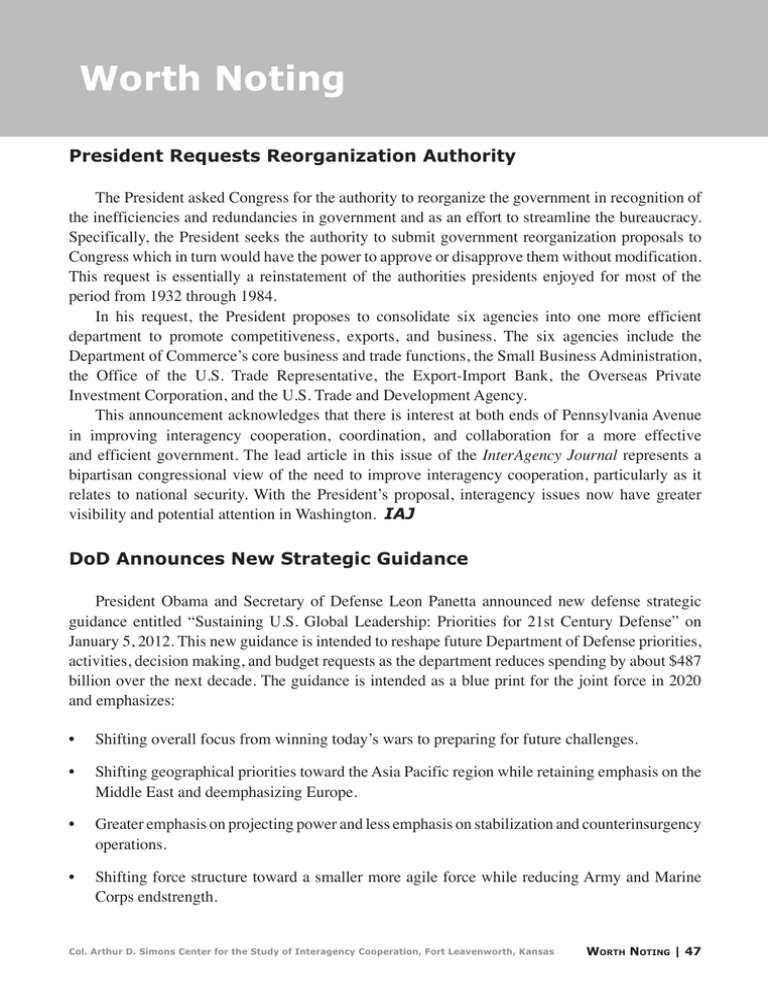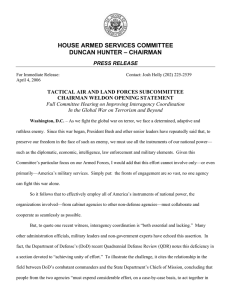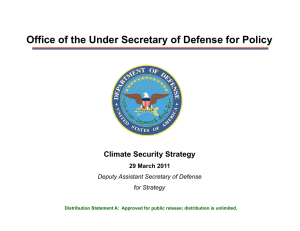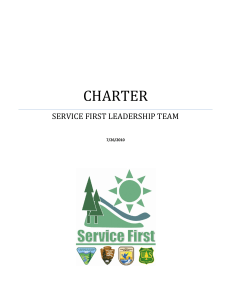Worth Noting - Arthur D. Simons Center
advertisement

Worth Noting President Requests Reorganization Authority The President asked Congress for the authority to reorganize the government in recognition of the inefficiencies and redundancies in government and as an effort to streamline the bureaucracy. Specifically, the President seeks the authority to submit government reorganization proposals to Congress which in turn would have the power to approve or disapprove them without modification. This request is essentially a reinstatement of the authorities presidents enjoyed for most of the period from 1932 through 1984. In his request, the President proposes to consolidate six agencies into one more efficient department to promote competitiveness, exports, and business. The six agencies include the Department of Commerce’s core business and trade functions, the Small Business Administration, the Office of the U.S. Trade Representative, the Export-Import Bank, the Overseas Private Investment Corporation, and the U.S. Trade and Development Agency. This announcement acknowledges that there is interest at both ends of Pennsylvania Avenue in improving interagency cooperation, coordination, and collaboration for a more effective and efficient government. The lead article in this issue of the InterAgency Journal represents a bipartisan congressional view of the need to improve interagency cooperation, particularly as it relates to national security. With the President’s proposal, interagency issues now have greater visibility and potential attention in Washington. IAJ DoD Announces New Strategic Guidance President Obama and Secretary of Defense Leon Panetta announced new defense strategic guidance entitled “Sustaining U.S. Global Leadership: Priorities for 21st Century Defense” on January 5, 2012. This new guidance is intended to reshape future Department of Defense priorities, activities, decision making, and budget requests as the department reduces spending by about $487 billion over the next decade. The guidance is intended as a blue print for the joint force in 2020 and emphasizes: • Shifting overall focus from winning today’s wars to preparing for future challenges. • Shifting geographical priorities toward the Asia Pacific region while retaining emphasis on the Middle East and deemphasizing Europe. • Greater emphasis on projecting power and less emphasis on stabilization and counterinsurgency operations. • Shifting force structure toward a smaller more agile force while reducing Army and Marine Corps endstrength. Col. Arthur D. Simons Center for the Study of Interagency Cooperation, Fort Leavenworth, Kansas Worth Noting | 47 • Increasing advanced capabilities in areas such as intelligence, surveillance and reconnaissance, unmanned systems, cyberspace capabilities, and special operations forces. The guidance is the result of a ten-month review directed by the President to identify $400 billion in the defense budget of the next 12 years and explicitly lists 10 missions in “loose, not strict” priority order: • Counterterrorism and irregular warfare. • Deter and defeat aggression. • Project power despite anti-access and area denial challenges. • Counter weapons of mass destruction. • Operate effectively in cyberspace and space. • Maintain a safe, secure, and effective nuclear deterrent. • Defend the homeland and provide support to civil authorities. • Provide a stabilizing presence. • Conduct stability and counterinsurgency operations. • Conduct humanitarian, disaster relief, and other operations. In the past, DoD has developed guidance and priorities using a force planning construct of the number and type of missions the force is expected to be able to accomplish simultaneously. The new guidance departs from that model choosing instead to describe a complex global security environment without stating what missions the force is expected to perform simultaneously. In the 1990’s that construct envisioned fighting two major contingency operations. The 2001 Quadrennial Defense Review (QDR) introduced a different construct: defending the homeland; operate from four forward regions of the world; defeat adversaries in two overlapping major military campaigns; and conduct humanitarian operations. QDR’s in 2006 and 2010 described multiple possible combinations of simultaneous contingencies while preserving the ability to do more than one big thing at a time. To support the reduction in funding and force structure – especially land forces – the new guidance calls for stronger diplomacy, development, and intelligence contributions to the overall national security effort. This shift towards interagency collaboration parallels the 2010 National Security Strategy and the State Department’s Quadrennial Diplomacy and Development Review. This shift could prove challenging since U.S. government civilian agencies are currently underresourced for the security roles they would appropriately play and face budget pressure of their own, which are forcing them to look for opportunities to scale back rather than ramp up. IAJ 48 | Worth Noting InterAgency Journal Vol. 3, Issue 1, Winter 2012



